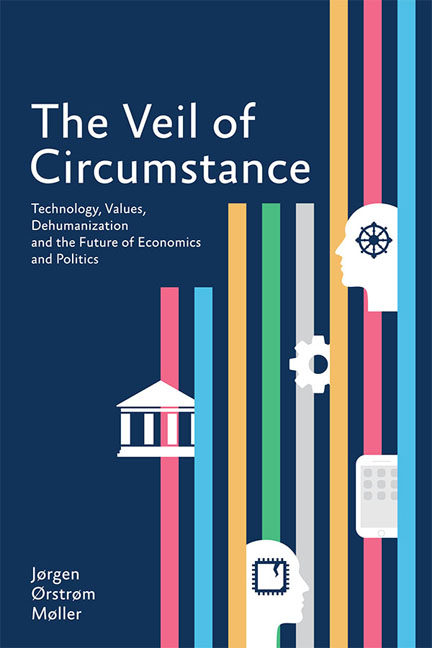 The Veil of Circumstance
The Veil of Circumstance 8 - Change in Economics
from III - ECONOMICS
Published online by Cambridge University Press: 19 May 2017
Summary
The transition brings along fundamental changes in virtually all economic reasoning, relationships and models. The whole panoply of economics and its tools, primarily in the form of models, are based on reading and interpreting behaviour. When that behaviour is fundamentally changing — and this transition inevitably means changing behaviour — the validity of tools and techniques based on earlier forms is certainly questionable.
8.1 Consumption Function
Private consumption is no longer the driver of the global economy as it was before the global financial crisis. As the global economy grows, albeit more slowly, consumption goes up in absolute figures, but not as a share of GDP in the major economies. There are no signs of a reversal of that trend — on the contrary. Changing patterns of usage of durable consumer goods, such as cars — in view of resource scarcities and efforts to reduce pollution and stop global warming — reinforce the consumer's tepid attitude towards materialistic consumption. A swing towards non-materialistic consumption, and an emphasis on “what is good for society”, is detectable.
Private consumption has long been the engine of growth for the global economy — especially with U.S. private consumption gobbling up around 70 per cent of U.S. GDP. The worrying factor from a growth perspective is that the chances of the consumer in other countries being able to replace the U.S. consumer in this role are not good. On the contrary, a number of elements point to lower or at least flat consumption, as a share of GDP.
Current consumption is not living up to expectations, which explains why global growth keeps falling, now running at 3 to 3.5 per cent instead of the 4.5 per cent rate of a decade ago. Behavioural trends, annoyingly persistent, vindicate this assertion, but these are rarely emphasized by economists, mired as they are in mainstream economic theories and prejudices. They generally ignore factors outside economics, and if they do notice them, they brush them aside as irrelevant.
In the 1930s, John Maynard Keynes singled out consumption as the core of economics. Before Keynes, the classical school of economics maintained that the economy was controlled by production capacity, or the supply side. The Keynesian revolution turned to the capacity and willingness of people to consume, the demand side, as an explanation for the business cycle.
- Type
- Chapter
- Information
- The Veil of CircumstanceTechnology, Values, Dehumanization and the Future of Economics and Politics, pp. 164 - 215Publisher: ISEAS–Yusof Ishak InstitutePrint publication year: 2016
